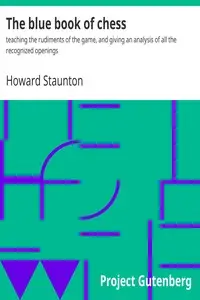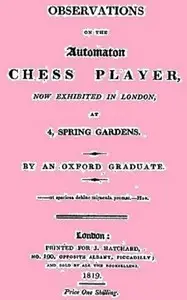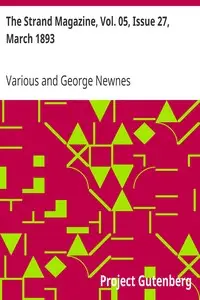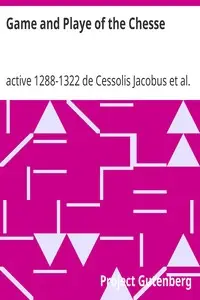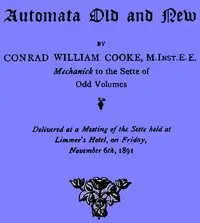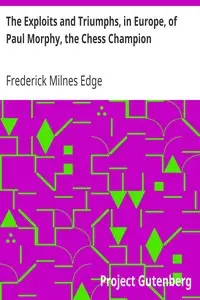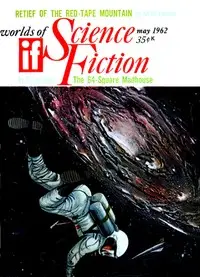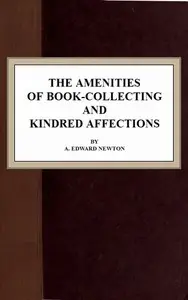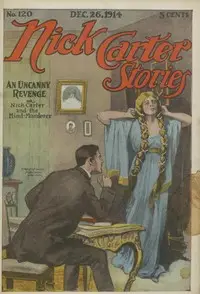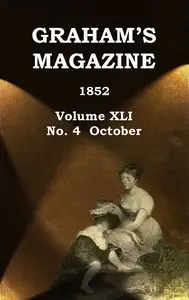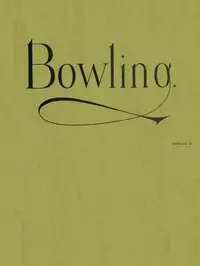"An Attempt to Analyse the Automaton Chess Player of Mr. De Kempelen" by Robert Willis is an investigative text from the 1800s that explores a renowned chess-playing machine created by Mr. De Kempelen. The publication studies the inner workings and basic ideas of the chess automaton, and debates if the machine’s chess-playing ability is based on actual mechanics or a hidden human. The publication gives details of the inner mechanisms, going over its complex design and how it imitates chess moves. Willis presents his doubts that it is a true machine because of the complexity of the different chess moves required during play. He proposes the idea of a hidden chess player and a method by which a person could hide inside of the device. The book also contains a detailed collection of the Knight's possible moves across the chessboard, providing academic understanding of both the game and the machine. Through close examination and logical ideas, Willis hopes to decode how the automaton works while appreciating the creativity behind its construction.
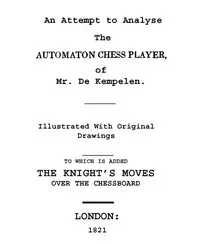
An Attempt to Analyse the Automaton Chess Player of Mr. De Kempelen To Which is Added, a Copious Collection of the Knight's Moves over the Chess Board
By Robert Willis
Uncover the secrets behind an 18th-century chess-playing machine as an author meticulously investigates whether its moves are mechanical wizardry or clever deception.
Free Download
Summary
About the AuthorThe Reverend Robert Willis was an English academic. He was the first Cambridge professor to win widespread recognition as a mechanical engineer, and first to set the scientific study of vowels on a respectable foundation. He is now best remembered for his extensive writings on architectural history, including many studies of mediaeval cathedrals and a four-volume treatise on the architecture of the University of Cambridge. He was described by Pevsner as "the greatest English architectural historian of the 19th century".
The Reverend Robert Willis was an English academic. He was the first Cambridge professor to win widespread recognition as a mechanical engineer, and first to set the scientific study of vowels on a respectable foundation. He is now best remembered for his extensive writings on architectural history, including many studies of mediaeval cathedrals and a four-volume treatise on the architecture of the University of Cambridge. He was described by Pevsner as "the greatest English architectural historian of the 19th century".
Total Reviews
10.0k
Total reviews from Goodreads may change

